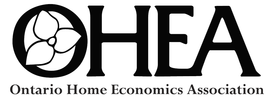|
By: Allison Jorgens, P.H.Ec Many processed foods are laden with sugar adding surplus calories to today’s meals. Soft drinks, fruit juice beverages, confectionary products, baked goods, breakfast cereals, and yogurt can all be culprits of calorie overload due to sugar. High caloric intake is a known contributor to obesity and Canadian waistlines continue to expand. The Public Health Agency of Canada reports that the rate of obesity in Canada is close to 25%. Currently, there is insufficient scientific evidence upon which to recommend limits on sugar intake. Unfortunately, this makes it difficult for Canadians to gauge – how much is too much? Food labels present additional challenges that are far from sweet:
Shopping tips to help you identify sugars on labels:
Too much to swallow? Two tips to help: Until scientific evidence evolves to support a recommended limit on sugar consumption suitable for all age groups and wide range of consumers in Canada, this simple equation may help to put sugars into perspective: 1. Divide the amount of sugars in grams declared on the Nutrition Facts Table by 4 to determine the equivalent number of teaspoons of sugar in each serving. Consider the American Heart Association (AHA) recommendations for limiting the amount of added sugars you consume daily: 2. The AHA recommends average women limit added sugar consumption to about 6 teaspoons a day (24 grams), and average men limit added sugar consumption to about 9 teaspoons a day (36 grams). *Note – Fruit spreads prepared from concentrated fruit juices that are added as fruit ingredients vs sweetening ingredients will contain a sweetener when the ‘No Sugar Added’ claim is displayed. -30- Allison Jorgens is a Professional Home Economist based in Ontario’s York Region. She has been working as a food label/regulatory affairs specialist for Canadian food companies for over a decade. Allison is a member of the Ontario Home Economics Association.
Ontario Home Economics Association (OHEA), a self-regulated body of Professional Home Economists, promotes high professional standards among its members so that they may assist families and individuals to achieve and maintain a desirable quality of life. For further information, please contact: Ontario Home Economics Association, 14 Totten Place, Woodstock, ON N4S 8G7 Tel/Fax: 519-290-1843 Email: [email protected] Website: www.ohea.on.ca
1 Comment
Mary Carver, PHEc
10/17/2013 03:00:55 am
An excellent release! Several helpful tips for consumers.
Reply
Your comment will be posted after it is approved.
Leave a Reply. |
The Ontario Home Economics Association, a self-regulating body of professional Home Economists, promotes high professional standards among its members so that they may assist families and individuals to achieve and maintain a desirable quality of life. Categories
All
Archives
April 2024
|
|
Subscribe to our mailing list
|
|
Unsubscribe from our mailing list
|
Copyright © 2023 Ontario Home Economics Association (OHEA). All Rights Reserved.


 RSS Feed
RSS Feed